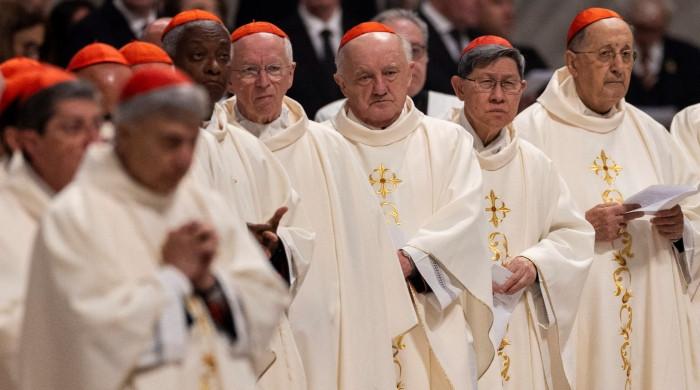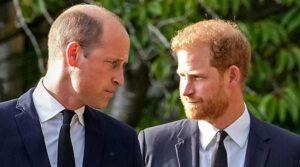The cardinals elect the successor to Pope Francis will have easier than many of their predecessors, who have endured Spartan conditions and have even been locked for so long that some of them died.
Here are some notable papal elections through the ages.
The dove decides
In 236, the Christian community of Rome debated potential papal candidates when a white dove landed on the head of a spectator, Fabian.
“To this, everyone, as moved by a single divine inspiration, impatiently called and with all my heart that Fabian was worthy”, according to Eusebius, historian of the Church of the time.
The blessing was mixed for Fabian, who died 14 years later, a martyr, persecuted by Emperor Decius.
Large -scale corruption
In the primitive church, the popes were elected by members of the clergy and the Roman nobility, and the votes were mingling.
One of the most sadly famous elections was in 532, after the death of Boniface II, which involved “a large-scale bridge bridge by royal officials and influential senators”, according to PG Maxwell-Stuart in “Chronicle of the Papes”.
In the end, an ordinary priest was elected, Mercurius. He became the first pope to change his name, in John.
In 1059, Nicholas II gave cardinals only the power to choose pontiffs.
Lock them
The idea of locking cardinals to encourage a quick decision started in the 13th century, the word conclave comes from the Latin sentence meaning “with key”.
In 1241, when the elections dragged, the head of the government of Rome locked the cardinals in a dilapidated building and refused to clean the toilets or to provide doctors to those who fell ill.
According to Frédéric Baumgartner in his “der behind the locked doors: a story of the papal elections”, the cardinals only decided that one of them died and the Romans threatened with extesting his corpse and making her make decisions.
After 70 days, they agreed from Goffredo Castiglioni, who became Célestine IV.
Three years
The longest conclave in history lasted almost three years after the death of Clément IV in November 1268, held at the Papal Palace in Viterbo, near Rome.
At the end of 1269, the cardinals allowed themselves to be locked up to try to make a decision and, in June 1270, the frustrated inhabitants tore the roof in order to place things.
They were apparently inspired by a joke by an English cardinal who, without the roof, the Holy Spirit could descend without hindrance.
Teobaldo Visconti became Pope Gregory X in September 1271.
Rations
In response to the chaos which led to its elections, Gregory X modified the rules, forcing the cardinals to meet within 10 days of the death of the Pope and to order that their food is reduced over time.
If there was no decision in three days, meals were to be reduced to one of the two main traditional Italians.
After five days, they would be reduced to bread, water and wine, according to the book by John L Allen “Conclave”.
Cardinals were also prohibited from relying on their income during a conclave.
Camp
The conclaves have been held for centuries in the Apostolic Palace and since 1878 in its Sistine Chapel.
The cardinals slept in the apostolic palace, with cabins erected with camp beds and a bathroom for 10 voters, according to Allen’s “conclave”.
The windows were closed, but in 1978, when the conclave took place during an stifling August, there was an almost revolt by the cardinals who demanded that they be opened.
Jean -Paul II – Elected in a second conclave this year, in October – ordered the construction of the $ 20 million guest house Santa Marta in Vatican Grounds, where Francis himself lived and where the cardinals remain now.
He has more than 100 invited suites and about two dozen single rooms. But during the conclave there too, the windows are closed.
Non-codiminals
Technically, any baptized male can become a pope, but the last non-cardinal to be elected was the Archbishop of Bari, Bartolomeo Prignano, who became urban VI in 1378.
Reticate pontiff
Not everyone is passionate. The first words of Albino Luciani, to become Jean-Paul I in 1978, were “that God forgives you what you did!”
He died 33 days later.
Champagne
In 1978, after having appeared at the crowd of Saint-Pierre, Jean-Paul II would have gone around Champagne for the cardinals and singing Polish folk songs.
In 2005, Benedict XVI invited all the cardinals to stay for dinner with champagne and there were also songs, recalled the late Cardinal Cormac Murphy-O’Connor.
Increasingly short
The longest conclave more recently was that of 1831, which elected Gregory XVI after more than 50 days.
The longest of the 20th century only lasted five days (14 ballots) when Pius XI was elected in 1922.
In 2005, Benedict XVI was elected in just two days (four ballots) and François in 2013 also in two days (five voting bulletins).




